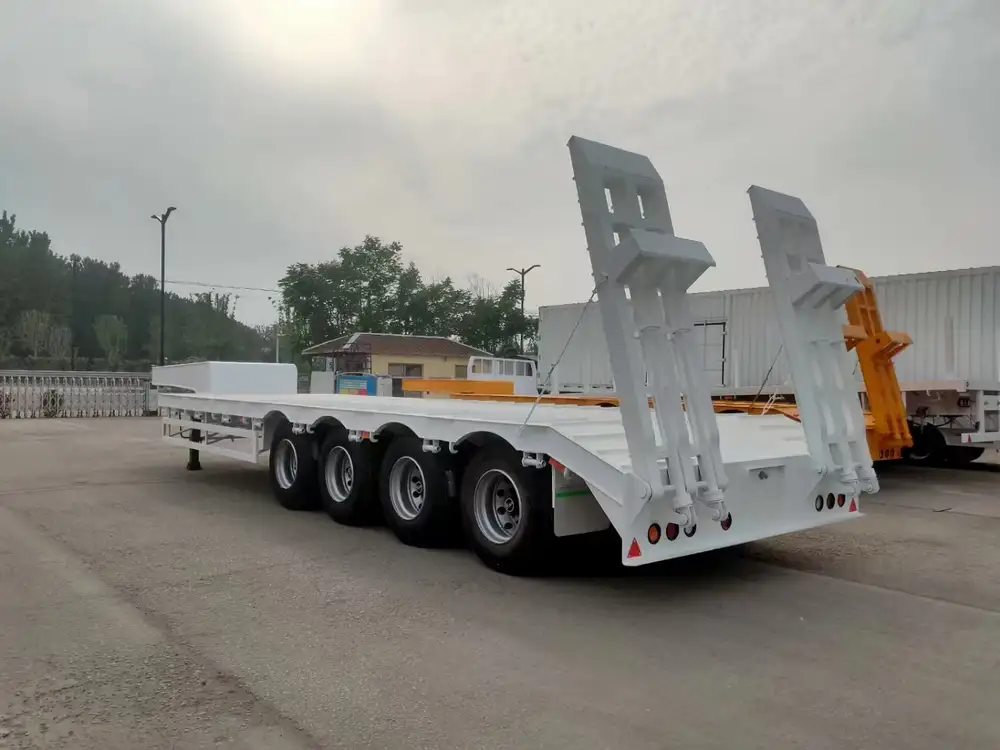When it comes to securing your investment in a dump trailer, understanding how much insurance you may need is crucial. The insurance landscape for dump trailers can be intricate, shaped by various factors that impact rates. This guide aims to dissect these factors, provide budget estimates, and explore ways to save on your insurance.
Factors Influencing Dump Trailer Insurance Costs
1. Type of Dump Trailer
The first factor worth considering is the type of dump trailer. Dump trailers come in various configurations and sizes, including:
| Type | Details |
|---|---|
| Single Axle | Typically lighter, suitable for small loads and more affordable insurance. |
| Tandem Axle | Carries heavier payloads, generally incurs higher premiums. |
| Gooseneck | Offers better stability and capacity, usually at a premium cost. |
| Low-Profile | Designed to lower the center of gravity, specific use cases can raise rates. |

2. Trailer Value
The market value of your dump trailer significantly impacts insurance premiums. Higher value trailers equate to higher replacement costs in the event of loss, thus raising the premium. We can categorize trailer values into:
- New Trailers: Brand new trailers can range from $5,000 to over $30,000.
- Used Trailers: Depending on age and condition, these can range from $1,500 to $20,000.
3. Usage and Application
How you intend to use your dump trailer matters. Heavy commercial use will likely raise your rates compared to occasional personal use. Considerations include:
- Commercial Use: If you’re hauling debris or materials as part of a business, expect higher premiums.
- Residential Use: Casual use like yard work or home improvement projects can keep costs lower.
4. Geographic Location
Where you live can greatly affect your insurance rates. Areas with higher crime rates or natural disaster risks may incur additional costs. Factors include:
- Urban vs. Rural Areas: Urban areas tend to have higher theft rates.
- Weather Risks: Regions prone to floods, hurricanes, or heavy snowfall may see increased rates.

5. Driving Record of the Owner
The owner’s driving history can influence insurance premiums significantly. Insurers often consider:
- Accidents: Previous accidents can flag you as a high-risk driver.
- Violations: Multiple traffic violations can also result in higher premiums.
6. Coverage Type
The level of coverage you seek will affect your overall expenses. Here are common coverage options:
- Liability Insurance: Covers damages to others in an accident.
- Comprehensive Coverage: Protects against theft, vandalism, or natural disasters.
- Collision Coverage: Covers damage to your trailer from an accident.
7. Deductible Amount
Your chosen deductible—what you pay out-of-pocket before insurance kicks in—will impact your premium. A higher deductible generally results in lower premium rates, while lower deductibles can raise them.

8. Bundling Insurance Policies
Nearly all insurance companies offer discounts for bundling different policies. If you’re insuring vehicles, property, or business equipment through the same provider, you may lower your premiums.
Cost Breakdown: How Much is Insurance on a Dump Trailer?
The insurance costs for dump trailers can vary widely depending on several of the factors discussed earlier. We can provide a general cost estimate as follows:
| Premium Range | Coverage Type | Typical Uses |
|---|---|---|
| $300 – $500 per year | Basic Liability Coverage | Personal and light commercial use |
| $600 – $1,200 per year | Comprehensive and Collision Coverage | Regular commercial use |
| $1,200 – $2,500 per year | High-Value Trailers or Comprehensive Commercial Coverage | Heavy-duty commercial applications |
Example of Potential Costs
Here’s an illustrative breakdown to visualize potential costs more conclusively:
Assuming a tandem axle dump trailer valued at $15,000 used for small construction projects:
- Basic Liability Insurance: $400/year
- Comprehensive Coverage: $800/year
- Collision Coverage: $600/year
- Total Estimated Annual Premium: $1,800/year

Ways to Reduce Dump Trailer Insurance Costs
While insurance rates can seem immutable, there are strategic approaches to minimize expenses effectively:
1. Shop Around
Not all insurers offer the same premiums. Obtaining quotes from multiple companies can reveal significant differences in pricing and coverage. Aim for at least three to five quotes to compare options.
2. Improve Safety Features
Incorporating safety features like brakes, anti-theft devices, or GPS tracking systems can lower your rates. Insurers often reward policyholders who take steps to mitigate risks.

3. Join Associations
Some trade or state associations offer insurance discounts to their members. These can include benefits tied to safety training or worksite safety programs that demonstrate lower risk.
4. Consider Usage-Based Insurance
If your trailer is not used daily or your usage is minimal, look into usage-based insurance which can lower costs based on actual usage rather than estimated needs.
5. Maintain a Clean Driving Record
Drive responsibly. Keep a clean driving record over time will positively affect your insurance rates. Many insurers provide discounts for drivers with a record devoid of accidents or violations over a period of a few years.

6. Evaluate Coverage Regularly
As your needs change, so should your coverage. Regularly evaluate your insurance needs and the actual value of your trailer. This review could lead to cost adjustments.
Summary: Key Takeaways on Dump Trailer Insurance Costs
In determination of how much insurance is necessary for a dump trailer, understanding the nuanced factors at play is essential. Coverage can range widely based on personal use, trailer type, geographic location, and the applicable risk.
Most importantly, ensuring that you frequently reassess your insurance needs—through diligent shopping, improving safety features, and regularly consulting with insurance agents—can ultimately yield significant overall savings.
Final Thought
Investing in dump trailer insurance can feel daunting, but with the right knowledge and tools at your disposal, you can make informed decisions. By navigating the complexities of these various elements, you can strike an optimal balance between adequate coverage and cost-efficiency.
As you move forward in assessing your options, keep this guide in mind to help you confidently address your insurance needs, enabling you to focus on your core business activities without the cloud of unforeseen financial burdens.



